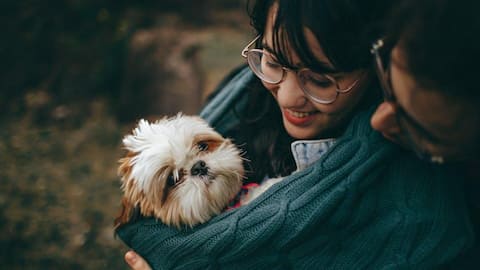Humans and dogs share deep neurological connection, study reveals
What's the story
Chinese researchers have discovered a unique neurological bond between humans and dogs. The study suggests that when humans gaze into the large, watery eyes of a dog, their brains may synchronize. This is the first time evidence has been found indicating the possibility of such brain synchronization between humans and dogs. The research provides new insights into the deep connection that has been formed over centuries of human-dog companionship.
Syncing up
Brain synchronization: A new phenomenon in human-dog interaction
The study builds on previous research that showed synchronization of brain activity when humans interact with each other. This is the first time, however, that such a phenomenon has been observed between different species - specifically humans and dogs. The researchers measured the brain activity of both humans and dogs using electrodes placed on the skull. The findings suggest a new dimension to our understanding of human-dog relationships, highlighting a deep neurological connection.
Experiment process
Study details: How human-dog brain synchronization was observed
The study, led by biologist Wei Ren from the Chinese Academy of Sciences, involved a series of experiments with 10 young beagles and unfamiliar humans. Over five days, the pairs were allowed to get acquainted with each other. During this period, they participated in nonverbal communication exercises while their brain activity was monitored. According to Ren's team, although there was no direct interaction between the pairs, inter-brain correlations in the frontal and parietal regions significantly increased during mutual gaze.
Neural Dance
Human-dog brain synchronization: Unraveling the neural dance
The researchers observed patterns of synchronization as human participants petted the dogs, with stronger synchrony in the parietal brain region. When humans gazed into the eyes of the dogs, there was deeper inter-brain activity between them. To understand which brain initiated this rhythmic neural dance, a special mathematical algorithm was used. The team discovered that it was the human brains which initiated this coupled neural activity during every interaction between humans and dogs.
Study
Do dogs really look like their owners? Study finds yes
A recent research shows it's common for dogs and their owners to resemble each other at dog parks, particularly with purebred dogs. Studies reveal that people can accurately match dogs with their owners based on appearance alone. Facial features, especially the eyes, are crucial for perceived resemblance. When participants matched photos with different facial features masked, their success was highest when the eyes were visible, but dropped significantly when the eyes were covered.
